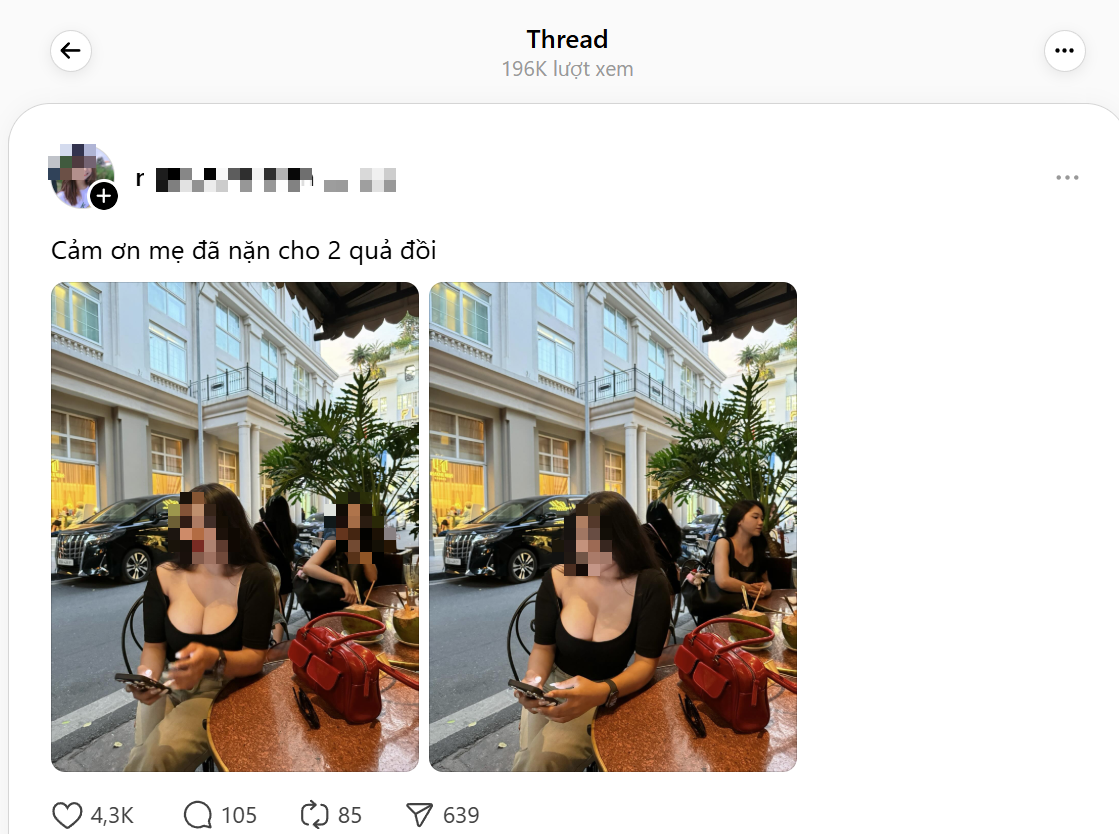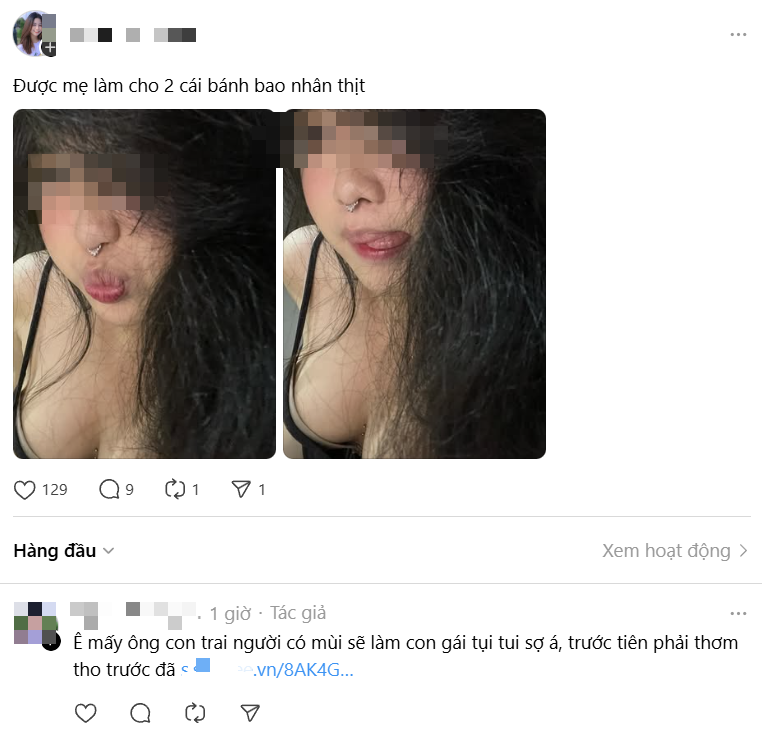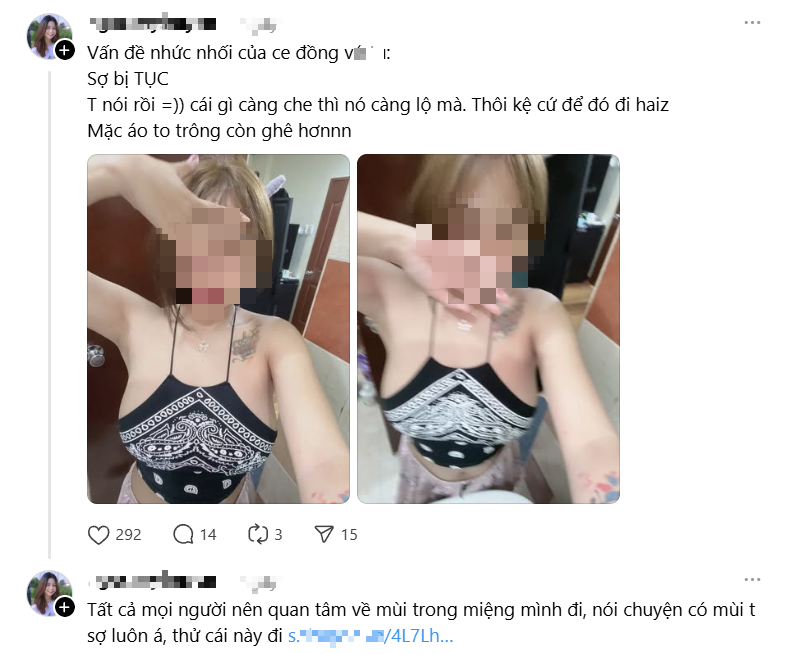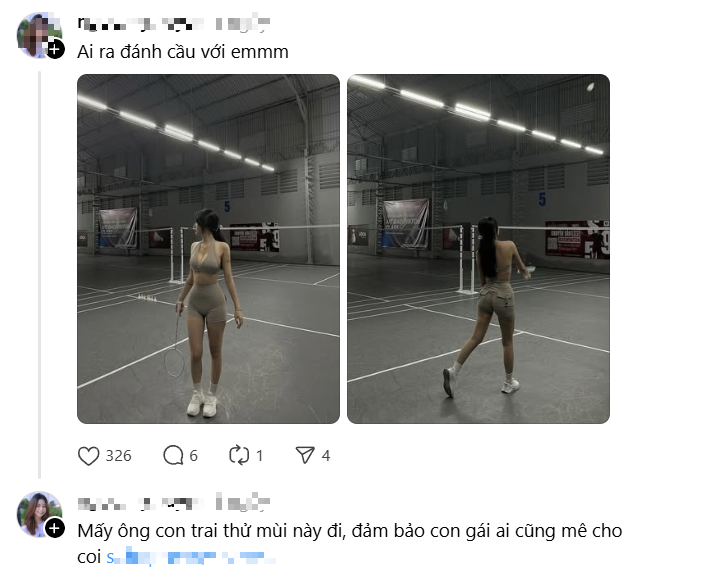The line between real life and the online space is becoming increasingly blurred, making it a major challenge to protect personal images. Particularly, with the rapid development of social media platforms, the tricks of illegal exploitation of others’ images are becoming more sophisticated and blatant.
Recently, a series of beautiful and attractive girls have fallen victim to this act when their personal images were stolen, publicly posted, and used for illegal commercialization, attracting hundreds of thousands of interactions and comments.
Luring with Attractive Images

The trick of the scammers is not new; it could even be considered old and predictable. However, what is alarming is that it still proves to be “effective” on social media platforms, where users’ curiosity facilitates exploitative behaviors.
Specifically, these scammers will “steal” images of beautiful girls with attractive, curvy figures from various sources. These can be from public social media accounts, forums, personal websites, or even from leaked images. They then create fake accounts on platforms like Threads or popular forums.
On these fake accounts, the images of the girls will be posted along with “teasing” status updates, provocative statements, or even fabricated stories to pique curiosity. These statuses are often written in a “sensitive” manner, appealing to the crowd mentality, especially targeting those easily attracted to “adult” content.

The combination of “hot” images and “teasing” statuses quickly creates a powerful viral effect. Hundreds of thousands, even millions of views, likes, shares, and comments flood these posts. Comments often revolve around inquiries for personal information or simply flirtatious and teasing remarks.

The Scammers’ Purpose
And this is when the scammers reveal their true purpose: attaching sales links. Including links in the comments is a clever tactic as it avoids the strict scrutiny of social media algorithms regarding direct posts containing advertising links. Moreover, with hundreds of thousands of interactions, these comments with links can easily get “drowned” in a sea of other comments, making it hard for users to immediately realize the scammers’ true intent.


This behavior not only affects the girls whose images have been stolen but also poses many other risks to the online community: the risk of financial scams and data loss, environmental pollution on the internet, reduced quality of information on social media, and negatively impacting the experience of legitimate users. Tracking down and handling these scammers is challenging due to the anonymity on social media.
In light of this situation, both users and social media platforms need to take proactive measures to protect themselves and prevent illegal exploitation
Raising awareness of personal information security: Limit the public posting of overly private or sensitive images. Strictly control the privacy settings of social media posts. Be cautious of “clickbait” content: Always maintain a skeptical attitude toward posts with “sensational,” “hot,” or overly “suggestive” content without clear verification sources. Report fake accounts and posts: This is the most practical action to help clean up the online environment. When discovering accounts using others’ images for exploitation, report them to the platform’s administrator…
Although the trick of “stealing” attractive images of beautiful women for exploitation is an old tactic, with the continuous development of social media and the lack of vigilance among some users, it remains a pressing issue. To build a safe and healthy online space, there needs to be a coordinated effort between user awareness, the responsibilities of social media platforms, and the decisive actions of regulatory authorities.